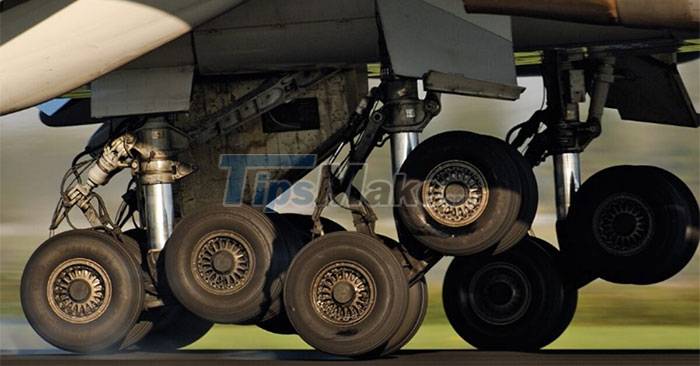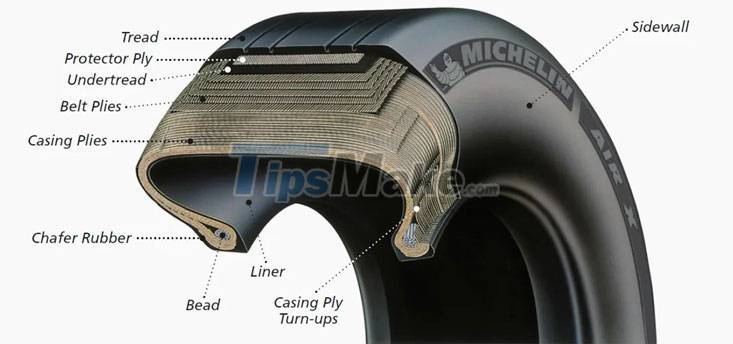Why do airplanes almost never have a flat tire?
Meanwhile, the same rubber tires, but the phenomenon of tire explosion in cars still happens often and can cause terrible accidents. Why so?
The aircraft tire runs on the runway at a speed of 274 km/h and can handle loads up to 38 tons. When the plane lands, the tires will slide instead of rolling. This is the reason aircraft tires often smoke and squeak when landing. The tire will be dragged along the runway until its rotational velocity equals the airspeed. This time in contact with the runway is the time when the aircraft's tires wear the most.

Each aircraft tire can run on the ground 500 times before needing to change the outer layer of rubber (the outer surface in contact with the road). The most durable aircraft tires can withstand speeds of 463 km/h.
According to Lee Bartholomew, Michelin tire test chief engineer, maximizing pressure is the most important factor in maintaining the life of an aircraft tire. Normally, normal airliner tires are inflated to a pressure of 200 psi, which is 6 times the pressure in car tires.
The tire of the Boeing 737 aircraft is 69 cm in diameter, 20 cm wide and surrounds a 38 cm diameter wheel rim. A Boeing 777 uses 14 tires, an Airbus A380 has 22 and the world's largest plane Antonov An-225 uses 32 tires.

Airplane tires are not too large, and the tire walls are not too thick. Beneath the outermost rubber layer are many different layers that help the aircraft tire to withstand good loads as well as not lose pressure. The strength of the tire lies in the cables that sink under the tread, which are usually made of nylon, or aramid (high-quality man-made fiber). Airplane tires can still explode if inflated or under-inflated, causing the tread to fall off and the tire layers to rip.
During the research, the manufacturers clearly examined what would happen when the aircraft's tires were overloaded or exceeded the maximum speed during take-off and landing. According to the regulations, to meet the standards of aircraft tires must withstand 4 times the pressure indicated on the tire for a minimum of 3 seconds.
Bartholomew said it's almost impossible to blow up a plane tire by overinflating it because too much pressure will damage the rim before the tire.
You should read it
- Goodyear invented a new tire that never needs to be replaced, the tire surface has the ability to regenerate itself
- What is tire pressure sensor? Should I install it in a car?
- Surprising facts about aircraft tires not everyone knows
- Learn about Airplane Mode
- How to Put Air in a Tire
- How to turn on, turn off airplane mode on iPhone?
 The first 'wandering black hole' was discovered, 7 times as massive as the sun, and it took scientists 6 years to observe it
The first 'wandering black hole' was discovered, 7 times as massive as the sun, and it took scientists 6 years to observe it Discover the 'unbeatable' 2D material: Light as plastic and stiffer than steel
Discover the 'unbeatable' 2D material: Light as plastic and stiffer than steel These are the 9 equations that changed the world, how many can you understand?
These are the 9 equations that changed the world, how many can you understand? 10 strange creatures found in the deep sea in 2021
10 strange creatures found in the deep sea in 2021 NASA successfully launched the James Webb space telescope, a 'time machine' that gives us a look into the past of the Universe
NASA successfully launched the James Webb space telescope, a 'time machine' that gives us a look into the past of the Universe Top 10 rare cat species in the world
Top 10 rare cat species in the world